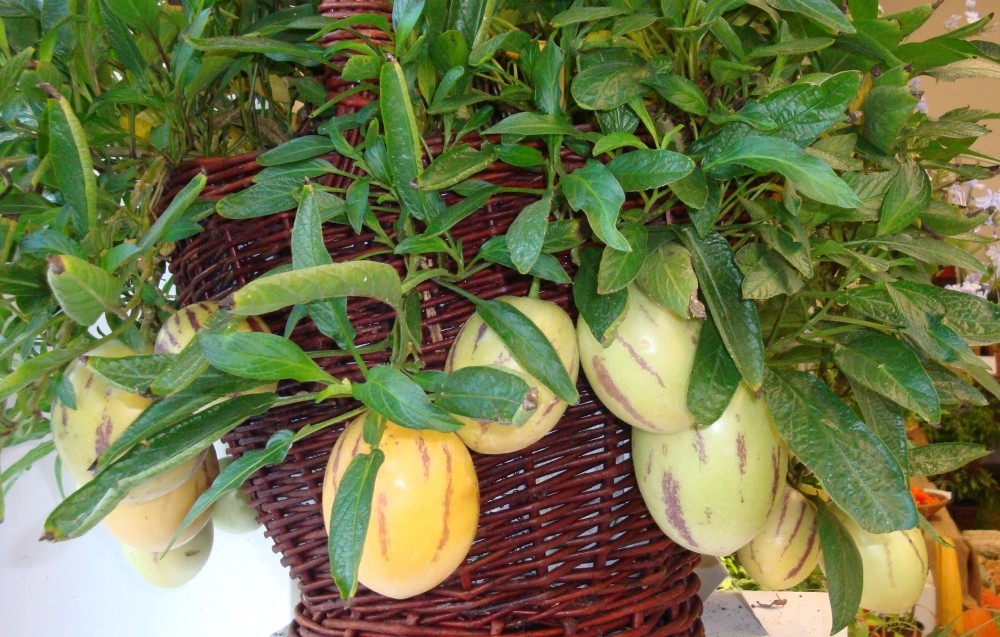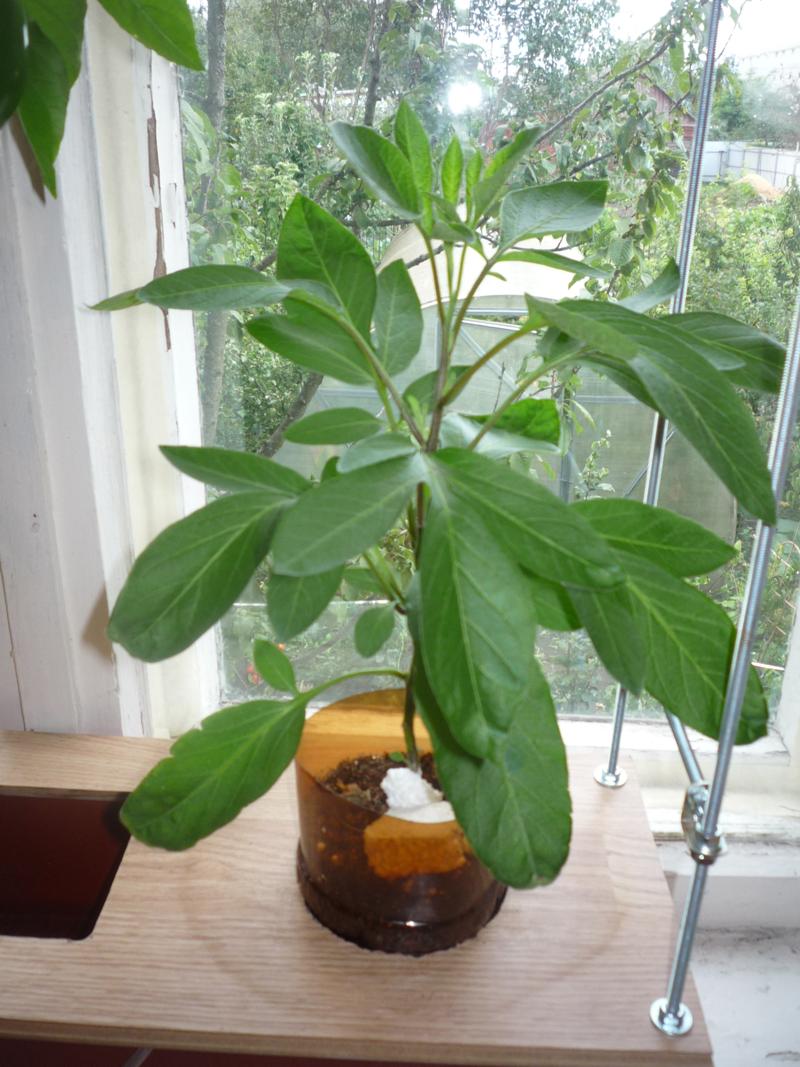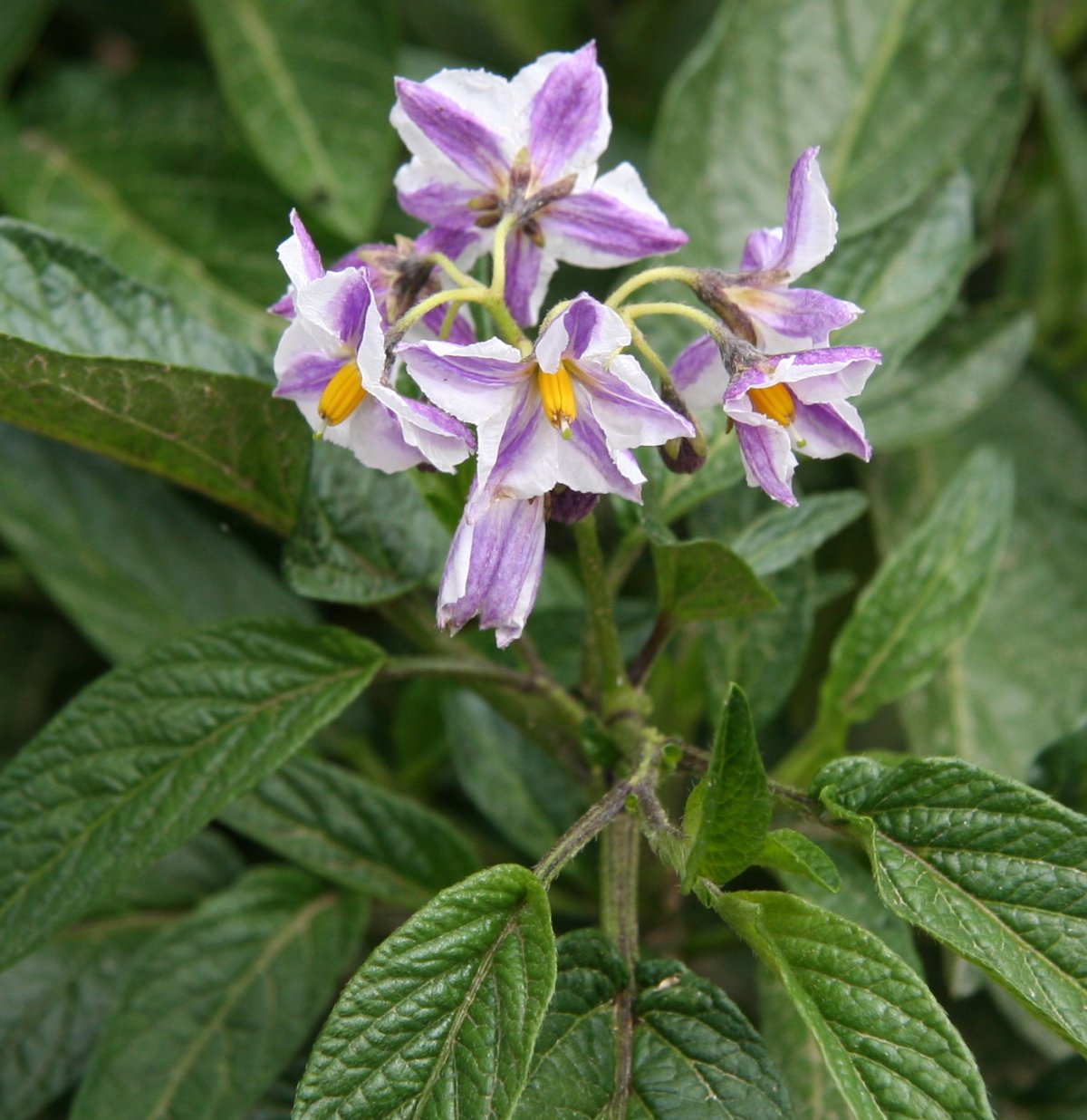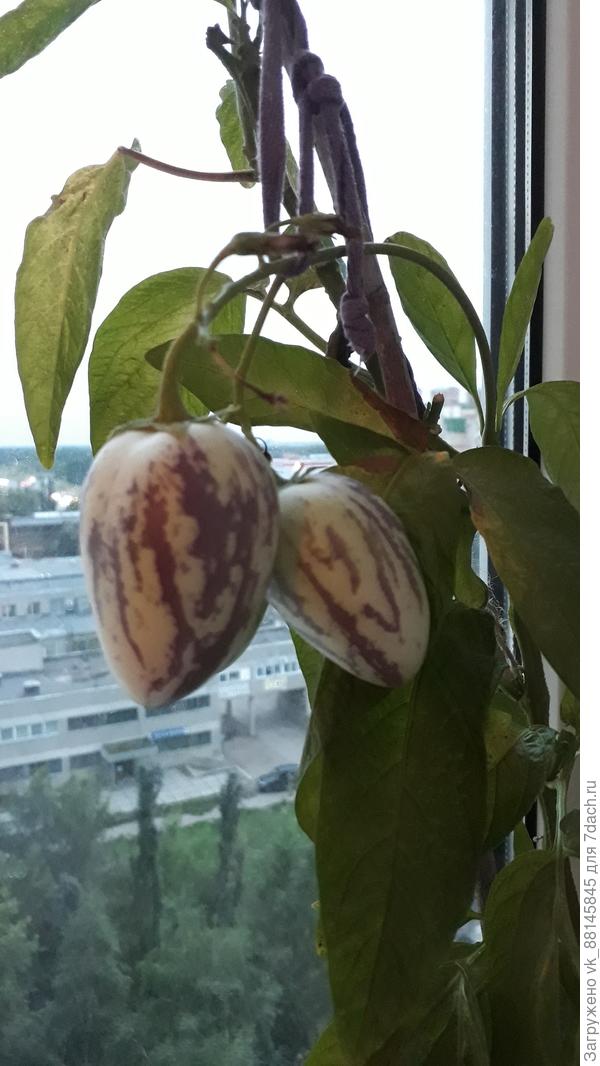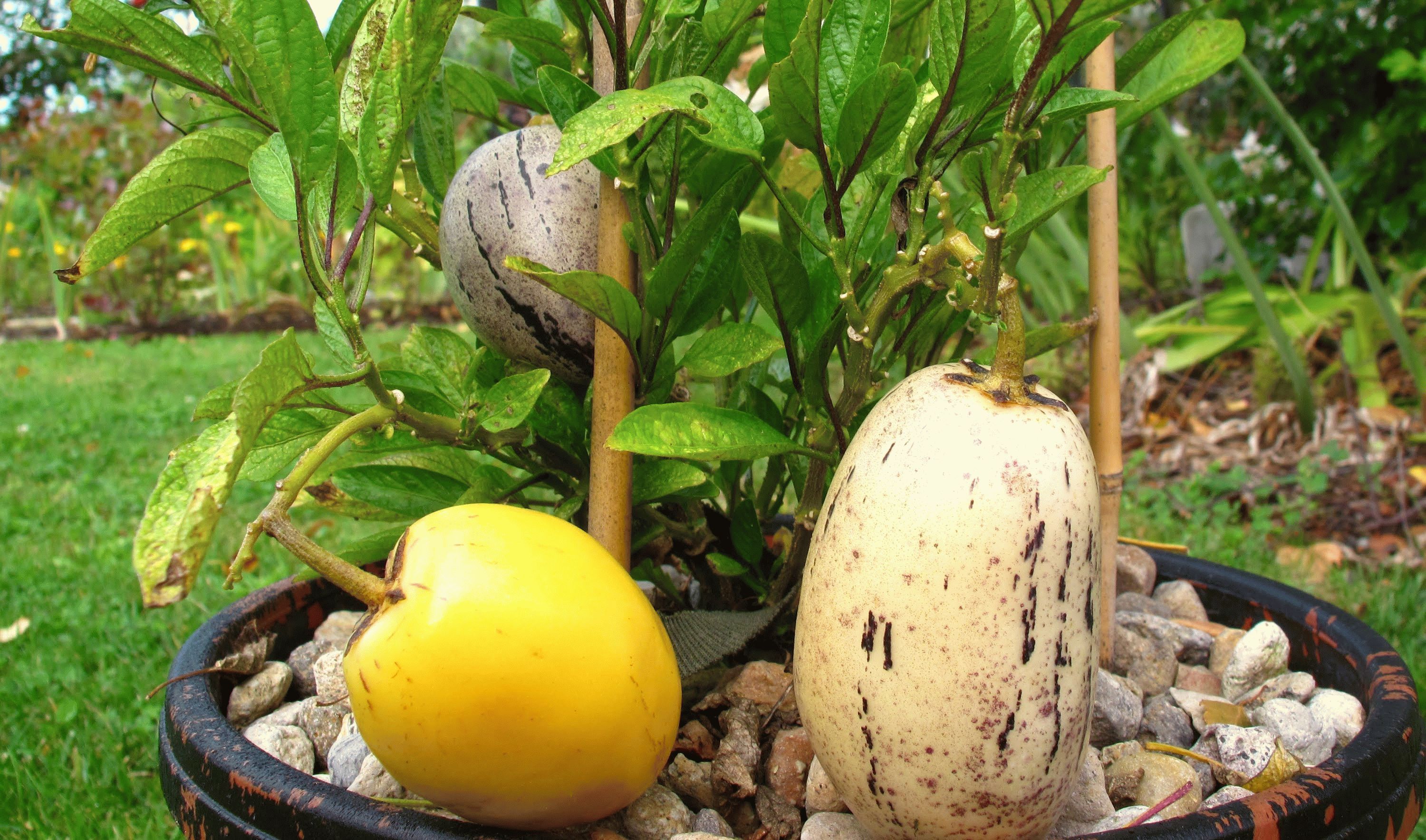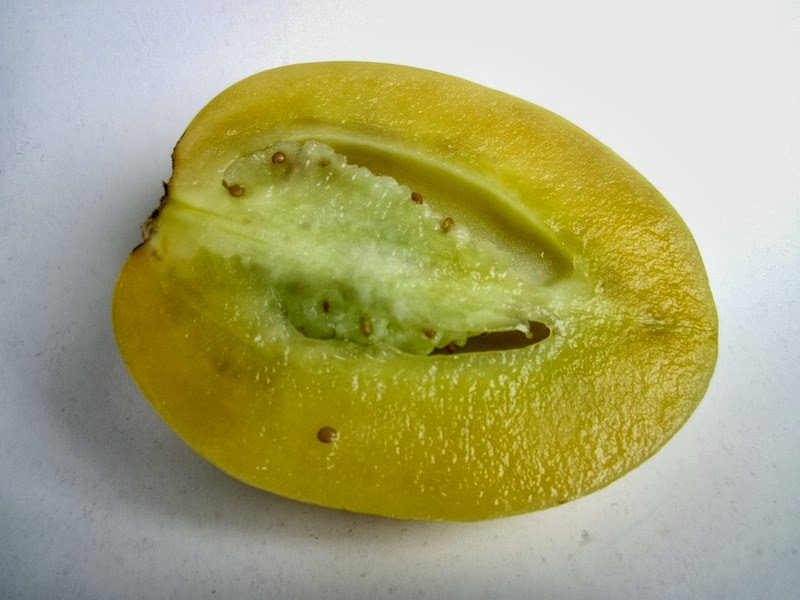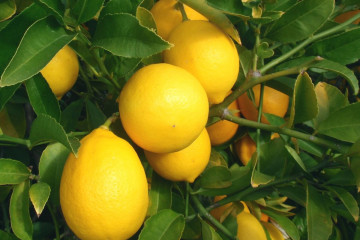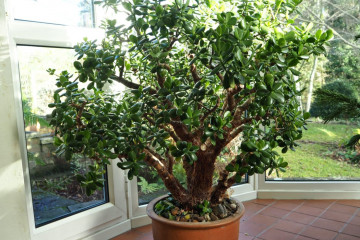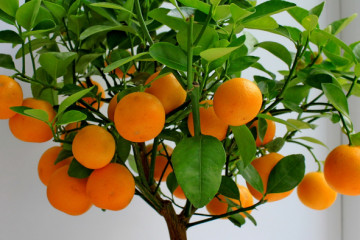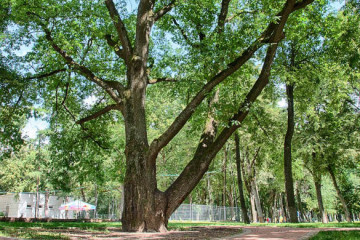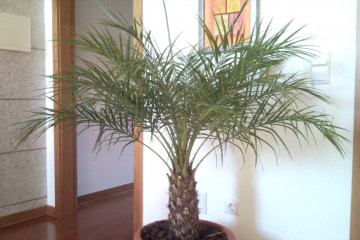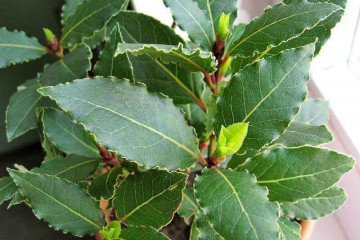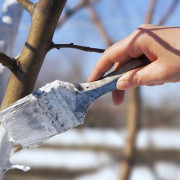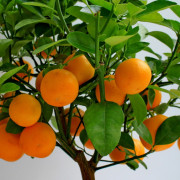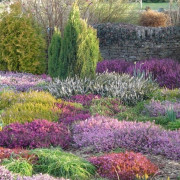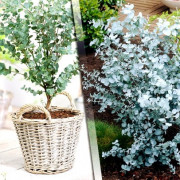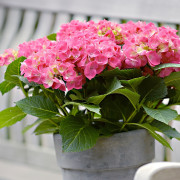Melon tree - what fruits and where it grows
Content:
The demand for original plants and exotic fruits is growing every year. People are interested not only in trying overseas fruits, but also in trying to grow them on their own. The melon tree, or pepino, is one of the available options for exotic plants that can not only grow, but also bear fruit in Russian climatic conditions.
What is pepino, what does the fetus look like?
Pepino is a small evergreen fruiting ligneous shrub belonging to the Solanaceae family. Plant height is about 1.5 m. Due to the similarity of taste with melon and mango, pepino shrub got the names "melon tree" and "mango cucumber". Sometimes, due to the similarity of the shape of the fruit with a pear, shrubs are called "melon pear".
It is difficult to give a specific description of the plant, since each species is endowed with its own morphological characteristics. In general, we can say that outwardly it combines the signs of different nightshades: the stem is similar to an eggplant, the flowers are like those of potatoes, the leaves resemble pepper ones.
The fruits of the melon tree can be oblong, round, pear-shaped, flattened. The color of ripe pepino ranges from cream to bright yellow. The rind may be speckled or darkly streaked. The mass of pepino is from 200 to 750 g.
The pulp of the fruit is juicy, colorless or yellowish, it tastes like a melon with an admixture of pineapple.
Pepino can be grown both as a greenhouse and as a houseplant. South America is considered the homeland of the plant, nowadays it is often found in Chile, New Zealand and Peru. The melon pear is also gaining popularity in Russia.
Melon tree namesake
The melon pear (pepino) is often confused with the melon tree (papaya). People often buy papaya seeds with the expectation that pepino will grow from them. Since growing papaya from seeds at home is no more difficult than a melon pear, beginners see the result of their own labor and are surprised. Some think that the wrong seeds were sold to them in the store, others become even more confused, convincing everyone that they have grown pepino.
A plant such as Babako is known under the name of the pentagonal melon tree. This is the third namesake of pepino cultivation at home, which has its own characteristics. It is easy to get confused with exotics, especially when the fruits have not yet appeared.
Before you try to plant a papaya, you should compare by the photo and make sure that these are the seeds of the papaya plant. Otherwise, confusion will start again. When buying, it is important to pay attention to the labeling of the seed bag, otherwise you can buy a completely unknown plant.
Growing features
There is a lot of trouble with growing melon pears - the Russian climate does not suit the plant, and you have to monitor the temperature and humidity in the room all the time.But how much joy can you experience by raising an exotic capricious person on your own.
Lighting
Pepino loves light and does not tolerate drafts, according to these indicators, you need to choose a place for its cultivation.
Watering
It is necessary to moisten the soil as it dries, in small portions. For the superficial root system of a melon tree, excess moisture is destructive. For watering, you need to use settled water at room temperature so that the delicate pepino does not become capricious.
Temperature
The optimum temperature for growing melon pears is 20-25 ° C. The critical point is 14 ° C, if the thermometer drops below, the plant may die.
Shaping and garter
To prevent thin shoots from breaking and growing up, they must be tied up. Experts advise to form pepino in 1-2 shoots. All young stepsons must be carefully broken off by hand. A properly formed plant, directed towards the sun, produces abundant fruits, which have time to ripen under the sun's rays and receive all the nutrients from a few shoots.
The soil
The plant needs a soil with neutral acidity, with a small nitrogen content (otherwise pepino will begin to give excess green mass to the detriment of fruiting). The temperature of the land for cultivation should not fall below 20 ° C.
Top dressing
Growth stimulants or poultry manure solution are used as fertilizer. Top dressing begins 14 days after planting the pepino in a permanent place and is repeated once every 14-20 days.
Flowering and harvesting
2-3 months after planting, pepino begins to bloom. Lilac flowers appear on thin shoots, which it is advisable to tie to the nearest shoot so that the buds do not break off under the weight of their weight.
A homemade melon pear during flowering should be placed in a well-ventilated place and try to create the most comfortable conditions. With a sharp change in temperature and humidity, the plant can shed ovaries and buds.
When ovaries appear on the plant, the frequency of watering should be increased. Melon pear is a juicy fruit that requires a lot of moisture to form. However, you do not need to pour, otherwise the fruit may crack.
Pepino ripens within 2 months. The fruit grows in size, acquires a characteristic color and aroma. To ensure longer storage, the fruits are cut with a pruner without damaging the junction with the leg. Pepino is sent to the bottom shelf of the refrigerator and stored for 1 to 2 months, depending on the variety.
Melon tree varieties for Russia
There are more than 20 varieties of melon pear, but only 2 of them are most often used for cultivation in Russian latitudes: Consuelo and Ramses. Gardeners from regions with a warm climate manage to plant them in open ground and get a harvest.
Pepino Consuelo
The variety was entered in the State Register in 1999 and is recommended for greenhouse cultivation and open ground.
Pepino Consuelo does not require pinching of the tops (indeterminate). Purple stems, more than 150 cm high, actively forming stepchildren. The leaves are small, whole-edged, light green in color.
The flowers look like potato flowers. The petals are white, most with purple stripes. It is noteworthy that pure white flowers do not form ovaries, but crumble.
4 months after germination, the first crop can be harvested. Fruits weigh from 420 to 580 g. The skin is smooth, yellow-orange, with purple stripes and specks. The shape of the pepino of this variety resembles a heart with a blunt top. The pulp of the fruit is very juicy, sweet, with a pronounced melon aroma.
The variety has a high yield and good germination.
Pepino Ramses
This variety was also included in the State Register in 1999. Recommended for cultivation throughout Russia. The plant is indeterminate, with shoots above 1.5 m. Shoots are greenish with purple spots. Leaves are medium, dark green, whole-edged.
The color and shape of the flowers are the same as those of the Consuelo variety. Ramses is distinguished by earlier ripening: after 3.5 months. Fruits are cone-shaped, pointed, weighing from 400 to 480 g. According to the State Register, the color of the skin of the fruit is yellow, but, according to reviews, Pepino Ramses is often cream colored with purple specks.
The skin is thin, glossy. The pulp is yellow, juicy, with a light melon aroma.
This variety is more resistant than Consuelo, has good germination and, with proper care, gives an excellent harvest.
How to grow at home
There is an opinion that pepino obtained by cuttings gives larger and sweeter fruits. This can be verified by personal experience.
Growing pepino from seeds
Since excess light on summer days can cause the ovaries to fall off, it is better to sow pepino in the fall. So the plant will be able to have time to form, bloom and set fruits before the onset of summer sunny days. You can sow seeds in the spring, but in this case, the bushes that have grown and formed the ovary will have to be shaded.
Often they write about almost 100% germination of pepino seeds. This information was probably launched in order to advertise the seed, because professionals estimate the germination of melon pears at 50-60%.
Pepino growing at home from seeds:
- Choose a container convenient for germination, for example, a plastic container.
- Make holes in the bottom. Put in the container drainage and a layer of coarse sand, previously calcined in the oven for the purpose of disinfection.
- Place a layer of nutritious soil in the container. Press down a little so that the seeds do not sink deeply.
- Spill the soil with foundation mortar.
- Spread the seeds gently over the surface.
- Cover the container with foil or glass.
- The plantings are aired daily, moistened with a spray bottle as needed. It is especially important during this period to observe the temperature regime of 25-28 ° С.
- A phytolamp or other light source is installed 10-15 cm from the container. Additional lighting is carried out around the clock, from sowing to picking.
- The seeds will hatch after 7 days, but not all. Some may not germinate for up to 30 days. As the pepino grows, the lamp should be moved aside. Some sprouts cannot shed the seed coat on their own and rot. To avoid this, you will have to help them by removing the shell with a clean needle.
- After the appearance of the third leaf, the seedlings are dived into separate cups.
- After a week, additional illumination is reduced to 16 hours.
Growing seedlings
Seedlings can be ordered by mail, but fragile plants are unlikely to reach the addressee unharmed. It is better to try to grow them from seeds using the above method.
If the seeds were sown in the fall, then by the spring the seedlings should get stronger. At the beginning of March, additional lighting is stopped and the plants are placed on the windowsill.
Seedlings are no more difficult to care for than any other nightshade:
- Watering should be regular, but not too abundant;
- Top dressing is done 2 weeks after the pick. You can use a complex fertilizer, diluting a double dose, or a special fertilizer for seedlings. Repeat once every 14 days;
- Transfer into larger containers is done after the appearance of 6-8 leaves.
Growing pepino from cuttings
The stepsons broken off during formation can not be thrown away, but used as cuttings for rooting. The lower leaves of the cuttings are cut and placed in a glass of water or placed in light soil.
You do not need to cover the pepino, but you will have to spray the plants often. With this method of propagation, roots grow quickly. If the cutting is rooted in the ground, it must be taken out together with an earthen lump on the roots and placed in a pot as such.
Growing pepino at home, especially from seeds, is not an easy task. Accepting this “challenge” from the tropics is an exciting challenge that will impress avid plant lovers.
Video
